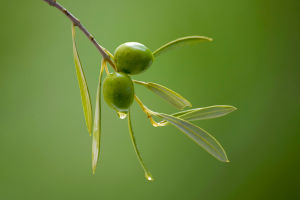Leaf Shapes
Leaves, often overlooked in everyday observation, are remarkable structures with an astonishing variety of shapes.
Their diverse forms are not merely aesthetic; they are a testament to the intricate ways plants adapt to their environments.
Understanding leaf shapes provides insight into their functions, evolutionary strategies, and environmental interactions. This essay explores the fascinating world of leaf shapes, examining their roles, diversity, and the factors influencing their evolution.
Function and Diversity of Leaf Shapes
The shape of a leaf plays a critical role in its function, primarily in photosynthesis, water regulation, and environmental adaptation. The most fundamental function of leaves is to perform photosynthesis, the process by which plants convert light energy into chemical energy.
Leaf shape influences how effectively a leaf can capture sunlight. Broad, flat leaves, such as those seen in many temperate plants, have a large surface area that maximizes light absorption. Conversely, needle-like leaves, such as those of pine trees, have a smaller surface area but reduce water loss through transpiration.
Leaf shapes can be categorized into several types based on their adaptation to specific environmental conditions. For instance, leaves of desert plants, like cacti, often evolve into spines to minimize water loss and protect against herbivores.
In contrast, aquatic plants have broad, flat leaves that float on water surfaces, facilitating gas exchange and light capture.
Adaptation to Environmental Conditions
Leaves have evolved a range of shapes to adapt to their environments. In arid regions, where water is scarce, leaves are often modified to reduce water loss.
The needle-like leaves of conifers, with their small surface area and thick, waxy coating, are an adaptation to dry conditions. Similarly, succulent plants, such as aloe and agave, have thick, fleshy leaves that store water.
In contrast, plants in high-humidity environments, such as tropical rainforests, often have large, broad leaves.
These leaves are designed to capture maximum sunlight in the dense canopy and facilitate efficient transpiration. The large surface area of these leaves helps in cooling the plant and supporting high rates of photosynthesis.
Moreover, some leaves have evolved complex shapes to enhance their reproductive strategies. For example, the pitcher plant has evolved leaves shaped like pitchers to trap and digest insects, providing essential nutrients in nutrient-poor soils.
Similarly, the large, intricate leaves of the Victoria water lily are adapted to support the massive blooms and provide buoyancy.
Evolutionary Perspectives
The evolution of leaf shapes is closely linked to the evolutionary history of plants. Fossil records show that the earliest plants had simple, undivided leaves. Over time, leaves evolved complex shapes through processes such as leaf dissection and lobing.
For instance, ferns exhibit a wide range of leaf shapes, from simple fronds to highly dissected forms, reflecting their adaptation to diverse environments.
Leaf shape diversity is also a result of genetic variations and evolutionary pressures. For example, plants that have colonized different environments often show significant variations in leaf shapes due to selective pressures.
This variation is not only a result of adaptation to physical conditions but also to interactions with other organisms, such as herbivores and pollinators.


